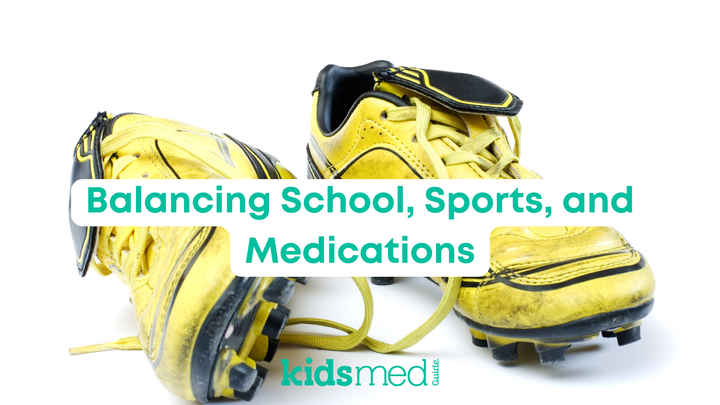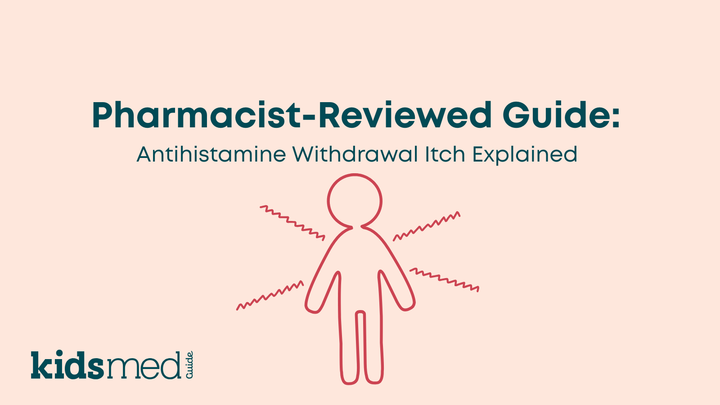How to Administer Eye Drops to Children and Babies

If you’ve reached this page and are also the parent of a young child seeking advice on giving eye drops to small, tiny humans, please accept my condolences.
Kidding… kind of. In my experience, there is a rare, easy-going child who can follow directions and tolerates eye drops just fine. Then, there is the rest of the pediatric population.
Kids don’t like the sensation of water being splashed into their eyes. You may trick them the first time, but gosh darn it, they aren’t going to fall for your “come here, let’s do your drops, hunny” trick again!
Why Might Kids Need Eye Drops?
Kids may need eye drops for a variety of reasons.
Bacterial conjunctivitis
There’s “The Goop.” And no, I’m not referring to a well-loved celebrity skincare brand here, unfortunately. (But I do love Goop sunscreen, FYI). The Goop occurs when there is an infection in the eye, often bacterial, that causes copious amounts of mucous to secrete and congeal around the tear ducts.
The Goop usually represents the much-dreaded and always-feared rendition of bacterial conjunctivitis, also known as contagious pink eye. The mucous can get so bad that vision is obscured, and their poor little eyes can get congested, gunk up, and cake shut from The Goop. It’s as gross as it sounds.
Viral conjunctivitis
Viral infections can also cause red eyes, typically with less or no Goop. Viral conjunctivitis isn't treated with antibiotics (they won't work for a virus!), but your doctor may recommend an eye drop for comfort.
FYI: Bacterial and viral infections, known as bacterial or viral conjunctivitis, can occur independently or in conjunction with another illness. For example, the flu, COVID, and ear infections are all known to be associated with conjunctivitis.
Allergic conjunctivitis
There is also allergic conjunctivitis - the red, itchy eyes caused by an allergy to something. Allergic conjunctivitis usually has no discharge but lots of redness and itchiness.
Injuries and other eye illnesses
Eye injuries, dry eyes, and more serious ophthalmic conditions requiring prescription eye drops are all other possibilities that your child may need an eye drop.
How to Administer Eye Drops to Older Children
So, how do you administer those drops? It should be straightforward if your child is older or an extremely rare rational toddler.
- Wash your hands and clean the eye area if necessary:
- If you’re treating The Goop (bacterial conjunctivitis or a condition with heavy eye secretions), cleanse the eye as needed with a warm, wet compress (e.g., a clean washcloth).
- Let the compress sit over the closed eye for a moment, then gently wipe the eyelid from the nose to the cheek side and repeat as needed.
- Rewash your hands once the eye is clean, and always discard or wash the compress right after.
- Once the eye is clean, or if no cleaning is needed, administer the drops:
- Have your child tip their head back, or have them lie flat.
- Shake the bottle gently if the label says to do that.
- Have your child look up and away.
- Gently place your hand on their forehead to hold the head steady.
- Holding the bottle about an inch away from the eye, administer it into the eye and aim for the lower eyelid area.
- Have your child blink a few times to get the medicine moved around and absorbed.
- They can also close their eyes and move the eye around if that’s more comfortable.
How to Administer Eye Ointments
The process is the same for ointments, except you would apply a thin layer of ointment (about 1/2 inch usually, but less for very small kids) to the lower eyelid, going from the nose side to the cheek side.
Pro tip: For drops or ointment, if you believe that you missed or your child moved, and most of the medication slipped out of the eye, go ahead and give another dose.
How to Give Eye Drops to Young Children
For younger children or older children who are scared or have difficulty tolerating eye drop application, that’s where it gets tricky. According to the AAP, if your child cannot or will not lie still, the recommendation is to:
- Place your child on their back (or get his head tipped back as far as possible), ideally on the floor (you can use a small pillow for comfort). Some human contortionist acts are coming, so it is best to be on the ground!
- Sit behind them and put their head between your legs.
- Put their flailing arms under your legs, gently, of course!
- Put your lower legs over their legs so they can’t flip over or kick you (we all know how good toddlers are at being ninja warriors).
- Once you’ve got them in this body bind, tip their head back with a pillow or towel under their neck.
- Proceed with the eye drop administration as highlighted above. You should probably wash your hands and prepare your moist compress before attempting the pretzel configuration described in steps 1-5.
Remember, the steps described for administering eye drops to an unwilling child are just recommendations for getting the medication into the eyeballs so it can do its job. Medicine is sometimes essential for treating infections and eye conditions like bacterial conjunctivitis.
I fully recognize, however, how difficult this may be for some kids and parents, and I am by no means advocating forcing your kiddo, kicking and screaming, into an uncomfortable medical situation!
Tips for eye drop success
Do what works best for your family. I’m a firm believer in healthy rules and boundaries. But when it comes to things you must do for your family's health - like medicine administration, shots, blood work, etc.- I sway more toward the “whatever works” approach.
Ideally, I get my kids' buy-in and cooperation so they’re not scared and feel that they still have autonomy over their bodies. However, I am not a perfect parent, and sometimes you have to do what you have to do! (Exception—if my husband ever happens to read this article, I am perfect, obviously.)
Last summer, my oldest had bacterial conjunctivitis, and for the first few doses, I let her have a small piece of candy after each successful drop application. Eventually, she realized it wasn’t a big deal, and I spaced the candy out to just once per day. Dentists, don’t come after me!
For my middle kid, LOTS OF PATIENCE is usually necessary. Reassuring her it’s no different than getting splashed at the pool and answering 101 questions. And very calmly suggesting we try again when she inevitably squeezes her eyes shut at the last moment, and the medicine bounces off her eyelids and rolls down her cheeks. And then lots and lots of praise about what a brave kid she is for enduring the unimaginable eye drop application.
Eye drops for babies
And then there’s the baby. I have no great advice for an unwilling baby or young toddler except to be fast! I sneakily give a drop in one eye, wait for the howling and raging to subside, then sneakily administer the drop in the other eye once that eye pops open again. Speed is the name of the game here, folks.
In younger babies, distraction with a fun toy, pattern, or even screen time would help. However, older toddlers may see any distraction attempt as insulting their intelligence and protest all the harder.
Post-Eye Drop Administration
Once you’ve successfully administered the eye drops or ointment using my stellar parenting bribery techniques, you can wipe the tip of the bottle with a clean tissue. Some package inserts recommend this step.
You should immediately recap the medicine and store it in a cool, dry place away from children. These medications do not come with child safety caps.
A few types of eye drops require refrigeration—read the labels. If it’s a refrigerated product, you usually want to let it come to room temperature before administration and then place it back in the fridge once you’re done.
Just like antibiotics, use your eye drops for the time your doctor recommends. This could be a defined amount of time if treating an infection or other condition, or it could be for a season or indefinitely. Eye drop application can be challenging, but with the right trickery and some master negotiation skills, hopefully, you can make it as painless as possible!
The following references were used to compile this information:
healthychildren.org (2013, February 13). How to Give Eye Drops and Eye Ointment. https://www.healthychildren.org/English/safety-prevention/at-home/medication-safety/Pages/How-to-Give-Eye-Drops-and-Eye-Ointment.aspx



